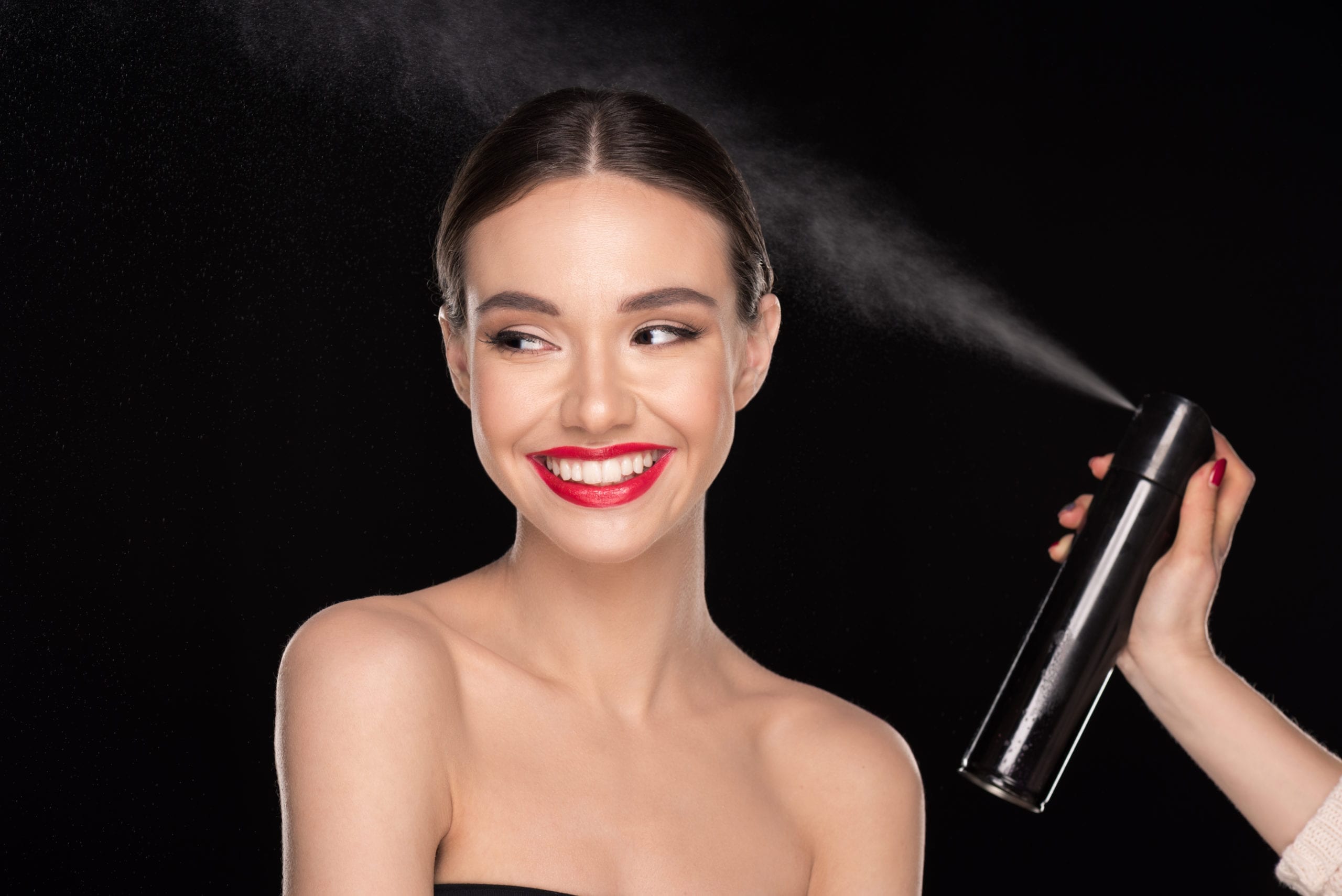It has been around since before your mother’s time. It’s sometimes sticky, sometimes flexible, can hold a perfect hairstyle for hours or add bounce and shine to your already glorious tresses. If you have never really gotten a hold of hairspray (yes, pun intended), or you have heard too many bad things about ingredients, effects, etc. We are here to help you with some knowledge.
History
Developed in Europe in the 1920s, hair sprays actually were not a phenomenon in the United States until the 1940s, right around the time that aerosol cans were invented. This was a time when up-dos and other classic hairstyles originated. By 1964, it became the hottest selling beauty product on the market. The sales have ebbed and flowed as a result of popular hair trends ever since (for example, a strong decline in the 1970s when loose, natural locks were all the rage).
This lacquer became known as an essential beauty tool with the rise of professional modeling, as hairstylists depended on it as not only a volumizing propellant but a humidity protectant and something that would keep their masterpieces in place for longer periods of time. The polymer-induced formulas were able to keep buns, braids, curls, or even sleek, straight hair intact while keeping hair out of a wearer’s face. If you’ve ever wondered how gravity-defying hairstyles of the past or present were able to become a reality, it’s likely that hairspray was at the source. The bouffants, teasing and upsweeps were really only made possible with this resin-based solution to keep enormous poofs at their highest.
The rise of hairspray (yes, we did it again) began evolving with not only a feminist movement but an environmental movement as people began realizing what chlorofluorocarbon aerosols were doing to the environment for the sake of beauty. This was the advent of the pump spray, which is still as optionable today, but not nearly as satisfying as that dramatic hiss from a can.
Evolution
As we merged into modern times, hairspray formulas also began to expand reach to satisfy the ever so popular beach waves, curl afros, event-style or occasion creations and to either lock and hold moisture, or to firm and stiffen carefully constructed hair artistry. Hairsprays now come in levels, typically from one to five, based on the hold factor of each (as sometimes you don’t want a glue-like substance to hold your naturally induced style). And scientists, manufacturers, and hair professionals started to get specific about exactly what they needed from hairspray, which has greatly expanded its reach (yep, we like puns) and ability to create, enhance or hold locks in position despite environmental factors or even hair types.
Now, if you want to tame frizz, seal something that took hours or just boost and enhance healthier hair, there is hairspray on the market for it. The hairspray category has evolved so drastically that not all products are the same and contain a variety of different ingredients to satisfy a look. Our culture has veered away from harmful chemicals and introduced organic substitutes that can ‘do the job just as well. Hair experts wanted to emphasize that hairsprays weren’t meant to damage hair (as it has done in ages past) but to also benefit and protect strands for various elemental factors.
Both women and men have been realizing the positive effects of using hairspray for quite some time. Adding sheen, adding bounce, sealing frayed ends, holding a slight bend at the tips, supporting spikes or sides weeps – all of these, among others, have been exceptional results of using hairspray. Hairstyles can get a bit capricious at times, which is why there has been such an expansion in the selection and scope available to hairspray enthusiasts. You shouldn’t have to worry about your hair frying like an egg when you apply a heat tool or the fringing and split ends that comb-teasing your tresses to the heavens could result in.
The hairspray market has continuously growing financial trends due to the demands of the beauty and hair-specific industries. Some of the most profitable manufacturers include Henkel, Kao, L’Oréal, Procter & Gamble, Shiseido, Unilever, and more. Hairsprays have not only become a science, but a daily staple of grooming, and people have come to rely and depend on the way hair can transform with a simple spritz (or many spritzes).
A Hairspray For Everyone
Perusing down the hair aisle at a drugstore, beauty store, or salon can be a bit overwhelming due to the variety of options available in the present-day, but education can absolutely narrow down your choices. If you have had trouble with cowlicks, flat hair, humidity, flyways, unfortunate effects of heat tools, keeping fine hair in place, protecting natural or curling iron-inspired curls, dry or brittle, color-treated – you name it, there is a hairspray on the market that was specifically engineered for your hairstyle and type.
Hairsprays definitely bridge the scope between low-budget and luxury brands, so there is also a spritz that can accommodate your budget. Multiple sizes, such as mini- or travel-sized are available if you need it on the run or for a little out of area jaunt, as well as high quantity options if you tend to go through your favorite formula like water. The array of options has become so highly specialized that there is tremendous room in the product category for a variety of manufacturers who want to focus on their strong suits.
Conclusion
If you’ve ever wondered about hairspray and its purpose, we hope this was a helpful piece to provide you with the knowledge or encourage you to try hairspray if you haven’t done so before.


